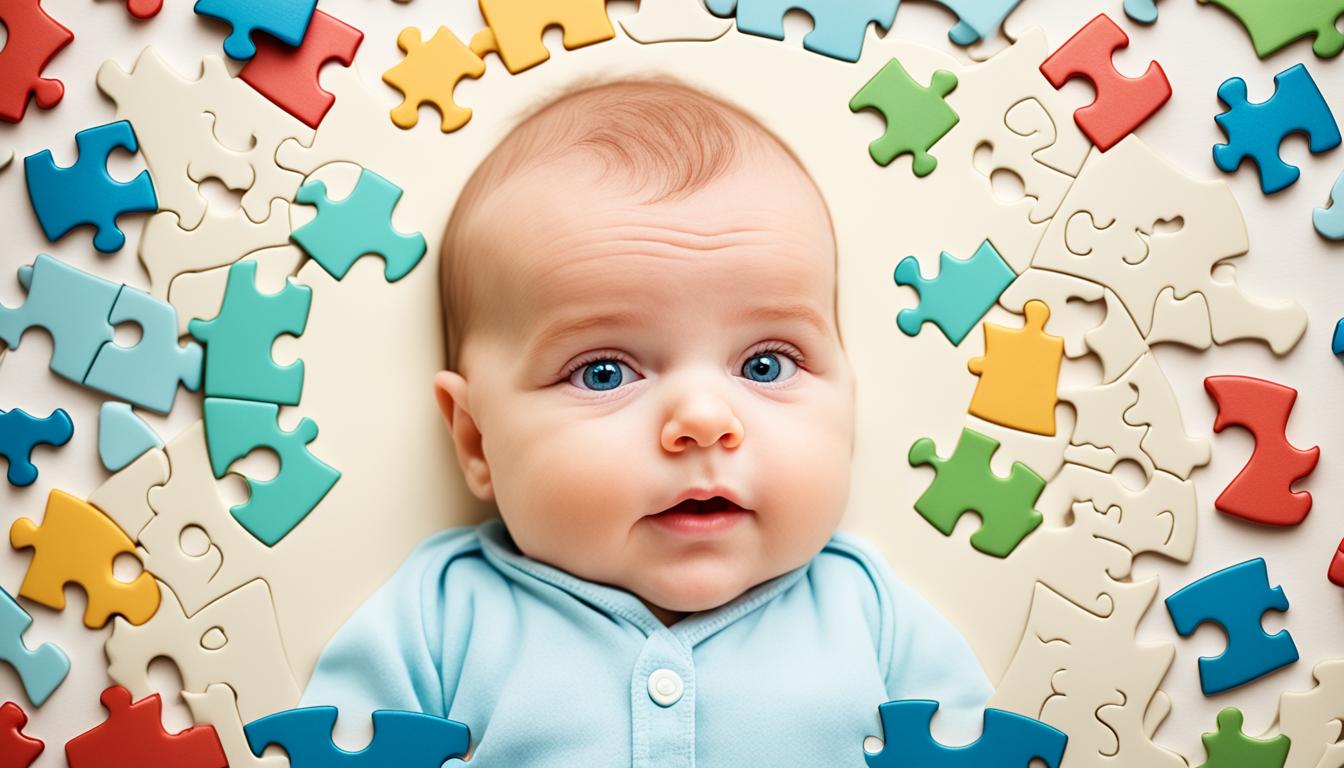Microcephaly is a condition where the brain has fewer neurons, leading to a smaller head. This is rare. It can result from genetic issues, drinking during pregnancy, or viruses. Signs include a small head, learning difficulties, and seizures.
Doctors often find microcephaly with ultrasound during pregnancy. Sadly, there’s no cure. But, care can improve life. This includes special education and therapies like physical or speech therapy. These help a lot.
Key Takeaways:
- Microcephaly means the brain has fewer neurons, causing a small head.
- Causes can be genetic issues, alcohol in pregnancy, or viruses.
- Symptoms include a tiny head and learning or seizure problems.
- Doctors typically spot this on ultrasound before birth.
- There’s no cure yet, but various therapies and support can really help.
Causes and Complications of Microcephaly.
Microcephaly is a condition where someone has a smaller head because of fewer brain cells. Many things can cause this. It’s important to know these things to help those with the condition.
Causes of Microcephaly
Gene issues and things in the world around us can cause microcephaly. Some genes, like Elp1, Elp2, and Elp3, when they change, they might cause the brain to grow small. This results in a person having microcephaly.
Drinking alcohol during pregnancy can cause microcephaly, which is part of fetal alcohol syndrome. Infections like the Zika virus while pregnant can also harm the baby’s brain, leading to microcephaly.
Complications of Microcephaly
Microcephaly can cause several problems that affect how a person learns and lives. These issues are:
- Intellectual disability: It can make learning and solving problems harder.
- Developmental delays: Kids might take longer to walk, talk, and grow mentally.
- Seizures: They could have seizures which makes things more difficult.
- Neurological problems: It might affect how well they move or their muscle strength.
To care for people with microcephaly, we must try to help with these problems. Early help, special education, and lots of therapies can improve their lives.
Diagnosis and Treatment for Microcephaly.
Doctors often spot microcephaly before birth using ultrasound. This shows if the baby’s head is smaller than it should be. They might do other tests like genetic testing to find the cause. These can show if something in the genes or the environment is causing the problem.
No cure exists for microcephaly now. But, treatments focus on lessening the symptoms and helping the person live their best life. The plan often involves teaching, therapies like physiotherapy, and support programs. These steps are crucial to help someone with microcephaly grow and learn better.
Stem cell therapy is a new hope in treating microcephaly. Research in Thailand is looking into how these therapies may help. The progress in this field offers a promise for a brighter future in treating microcephaly.

